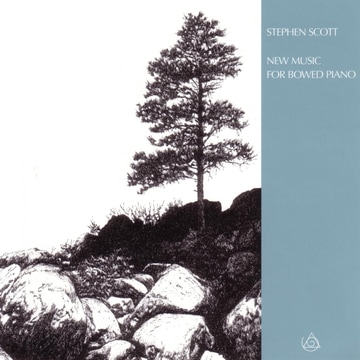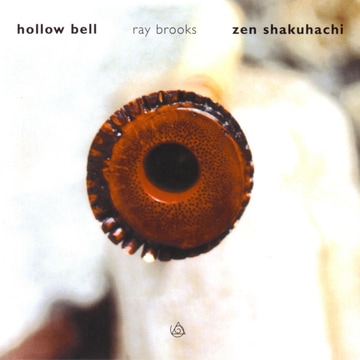|
Where the Heart is Pure
Berkely Symphony Orchestra; Kent Nagano and Laurent Pillot, conductors; Kees Hulsmann, violin; Stephanie Friedman, mezzo-soprano; Robin Sutherland, piano; Nadya Tichman, violin; Jack Van Geem, percussion Lewis writes in an attractive tonal idiom that appeals to both heart and mind. The music is euphonious and often disarmingly pretty, but with a core of strength that shows itself in surprising harmonic choices and vigorous instrumental textures. --San Francisco Sunday Examiner & Chronicle Where The Heart Is Pure was composed as a tribute to the wonderful Northwest poet Robert Sund, whom I've had the pleasure of knowing for over twenty-five years now. When I first met Robert, he was living in a converted net shed overlooking the Skagit River in the Northwest part of Washington State. For several years I made the journey out to visit him from my home in Seattle before moving to San Francisco. When I went to visit, we would typically stay up into the early hours of the morning while I improvised on the guitar and he read his poetry. Since I'd always wanted to set Robert's poetry to music, I decided to create a song cycle depicting a journey out to see him on the river. With that in mind, the first section of the composition starts with me leaving the urban environment I've always had to live in in order to survive as a composer. To relate to that idea, the music is jagged, yet with a jazz-like swing, with the soloist singing my own version of scat. The second section is the traveling music which depicts the actual journey out to see him. This section then leads to a cello solo which is the actual arrival music, bringing the listener to the setting of the first poem. All three poems are then set so the listener can easily understand them. --Peter Scott Lewis There Is No Exile Where The Heart Is Pure (for Pablo Casals) Behind the barn, the first week of March, on a bright morning after long rain, the windy cedar tree turns round and round in the sunlight. A winter horse rubs himself on the corner of the barn. Little pieces of cedar glide down where the ants are calling home their old senators who have failed utterly. Coming home, carrying suitcases full of noise, they pass through small American towns. On the barn wall, rusted nails bleed; and in fences, in hinges, in boards. The horse (I think of Casals in exile!) plays a suite unaccompanied in the silver cedar boards. Inside the barn, the stranded haywagon shudders. Between its floorboards seeds trickle to the earth. A dry dusty odor mingles with festering dampness, and a hand -- blue ridges and rivers coming and going through it -- rests on the white sheet of the windows. My grandmother comes to swing open wide the huge double doors, doors like drifiting continents, and a wedge of healing sunlight slips into the barn before her. --Robert Sund Available here: iTunes HDtracks New Music For Bowed Piano
For bowed piano, performed by the Colorado College New Music Ensemble Works for Bowed Piano Ensemble Just for fun, put this record on and ask your friends to tell you what instrument is making the sounds. Assure them that it's an instrument they're quite familiar with. Unless they already know what a bowed piano sounds like, they're sure to be mystified. Scott's pieces betray a Steve Reich influence; the harmonies are rich, relatively consonant, and unexpected, and repetitive passages with a steady eighth-note pulse alternate with long sustained chords. --Keyboard, May 1984 The Recording reconsidered upon its reissue-- It is generally agreed among artists that their productions, once disseminated through reproductions, take on a life of their own, as though they were adult people who had once been their artist's children. It's not that these compositions have matured, but when they are heard they must stand on their own merits, even as they are perceived by those familiar with my (much more complex and large scale) recent work, as early essays in an untried medium. I hope that this reissue will convey again some of the sense of excitement and discovery we all felt on our first voyages into an uncharted sound world. --Stephen Scott, June 1999 From the original liner notes: I first became aware that one could bow the strings of a piano in 1976, when I heard David Burge play a composition by Curtis Curtis-Smith. This was a solo piano work, played mostly on the keyboard but utilizing also some prepared piano techniques. One striking effect was produced by drawing nylon fish line across the strings. I was captivated by the sound and began immediately (before David's performance was over as I recall) to imagine the sound of several players bowing a piano's strings simultaneously, thus producing sustained chords. Thus was born the first composition for ensemble-bowed piano, Music One for Bowed Strings, which I completed in 1977 and performed that year with the Colorado College New Music Ensemble. It should be stressed that all of the sounds heard in the ensemble pieces are produced by the piano strings; no electronics or other sound producing devices are involved. The recordings are made "live" exactly as they are performed in concert. --Stephen Scott, November 1983 Available here: iTunes Hollow Bell
Honkyoku, for solo shakuhachi the companion recording to Blowing Zen: Finding an Authentic Life, published by H J Kramer In China during the Tang Dynasty, there lived a highly educated, eccentric Zen monk named Fuke. Fuke was prone to wandering about the streets ringing a bell, preaching the Dharma and chanting sutras. A young flute maker named Zhang Bo followed Fuke around the streets listening to his Zen doctrine. Zhang Bo longed to be Fuke's disciple but Fuke would not accede. Rejected by Fuke, Zhang Bo decided to craft a flute from a thick piece of bamboo and tuned it to imitate the sounds of Fuke's bell. He called the instrument his hollow bell. The shakuhachi is an instrument that dates far back into time and is usually associated with Japanese ritual and meditation. It is an instrument of extraordinary color and emotional range. In the modern era it has traveled from its monastic and folkloric identity to appear in every context, from symphonic work to free jazz. This record revisits the root material through the playing of the English musician, Ray Brooks, and it is the musical companion to the story told in his book, Blowing Zen (published by H J Kramer). Ray Brooks left the West in the era of the shifting cultural sands of the seventies, traveled the world, and found himself in Japan. There he came across the shakuhachi and with it the discipline of zen buddhism. Decades later his story is circulating among the western face of zen practice, as one of our stories, with all the ironies and coincidences of the core interest in 'mindfulness' that is across Europe and North America. The material on this record is referred to as 'original music' (honkyoku), and consists of repertoire that sits at the foot of history. Yet Ray's playing is not like a Western person attempting to sound Japanese. His playing is honest and transparent, without borders. It is a music that evokes the moment through celtic ritual, memory through zen melody. Available here: iTunes |
New Albion Records, Inc.Archives
October 2010
|



